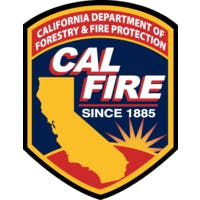Wildfire Readiness

Defensible Space is your property's front line defense against wildfire. Creating and maintaining defensible space around your home can dramatically increase your home's chance of surviving a wildfire and improves the safety of firefighters defending your property. 100 feet of defensible space is required by law.

Two zones make up the required 100 feet of defensible space:
Zone 1: 30 feet of Lean, Clean & Green
- Remove all dead plants, grass and weeds
- Remove dead or dry leaves and pine needles from your yard, roof, and rain gutters
- Keep tree branches 10 feet away from your chimney and other trees
Zone 2: 30-100 feet of Reduced Fuel
- Cut or mow annual grass down to a maxiumum height of 4 inches
- Create horizontal spcing between shrubs and trees
- Create vertical spacing between grass, shrubs and trees
Use Equipment Properly to Keep from Sparking a Wildfire
- Mow before 10 a.m., and never on a hot or windy day. String trimmers are a safer option (vs. lawnmowers) for clearing vegetation.

Vertical Spacing
Veritcal Spacing
Large Trees do not have to be cut and removed as long as all of the plants beneath them are removed. This eliminates a vertical "fire ladder"

Horizontal Spacing
Horizontal Spacing
Create horizontal and vertical spacing between plants, the amount of spacing will depend on how steep the slope is and the size of the plants

